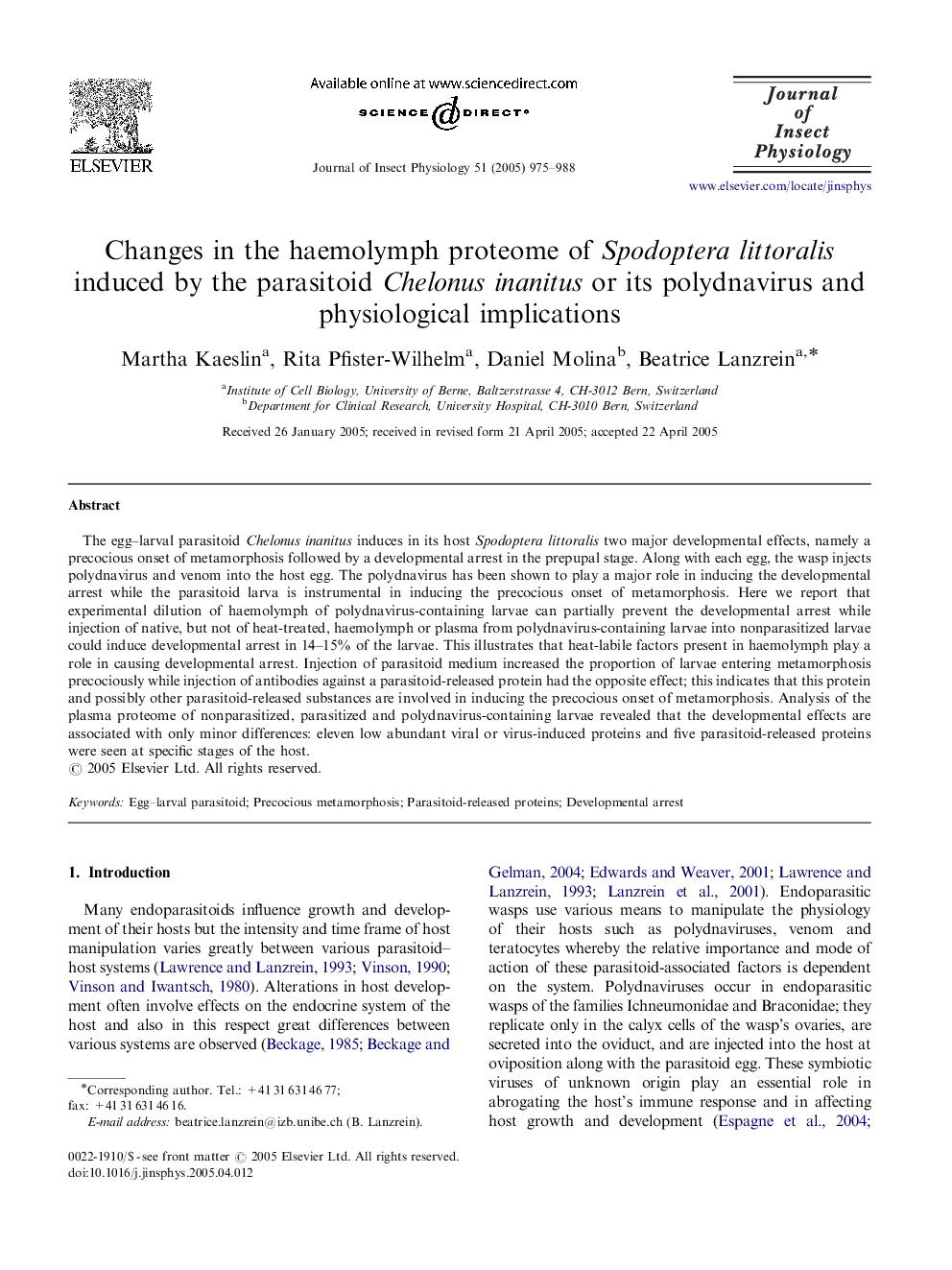| Article ID | Journal | Published Year | Pages | File Type |
|---|---|---|---|---|
| 9147273 | Journal of Insect Physiology | 2005 | 14 Pages |
Abstract
The egg-larval parasitoid Chelonus inanitus induces in its host Spodoptera littoralis two major developmental effects, namely a precocious onset of metamorphosis followed by a developmental arrest in the prepupal stage. Along with each egg, the wasp injects polydnavirus and venom into the host egg. The polydnavirus has been shown to play a major role in inducing the developmental arrest while the parasitoid larva is instrumental in inducing the precocious onset of metamorphosis. Here we report that experimental dilution of haemolymph of polydnavirus-containing larvae can partially prevent the developmental arrest while injection of native, but not of heat-treated, haemolymph or plasma from polydnavirus-containing larvae into nonparasitized larvae could induce developmental arrest in 14-15% of the larvae. This illustrates that heat-labile factors present in haemolymph play a role in causing developmental arrest. Injection of parasitoid medium increased the proportion of larvae entering metamorphosis precociously while injection of antibodies against a parasitoid-released protein had the opposite effect; this indicates that this protein and possibly other parasitoid-released substances are involved in inducing the precocious onset of metamorphosis. Analysis of the plasma proteome of nonparasitized, parasitized and polydnavirus-containing larvae revealed that the developmental effects are associated with only minor differences: eleven low abundant viral or virus-induced proteins and five parasitoid-released proteins were seen at specific stages of the host.
Related Topics
Life Sciences
Agricultural and Biological Sciences
Insect Science
Authors
Martha Kaeslin, Rita Pfister-Wilhelm, Daniel Molina, Beatrice Lanzrein,
